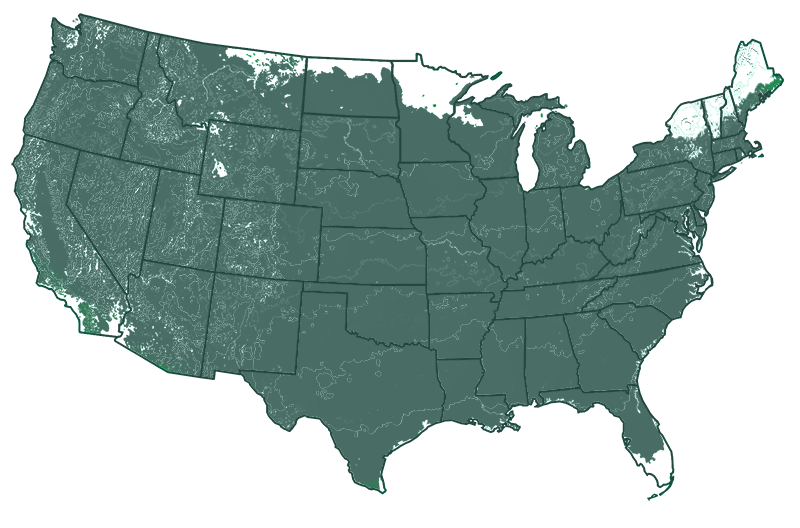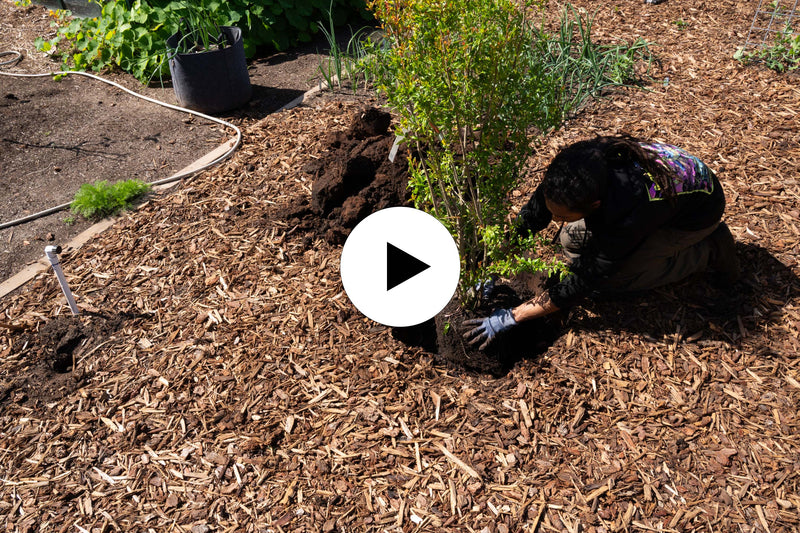


Fuji Apple Tree
View More Planting Info
Choose a spot that is at least 10 feet from other trees and structures. Full sun is required for strong flowering and fruit development. Plant in well-draining soil, as the roots don’t like sitting in water. Dig a hole twice as wide and the same depth as the root ball. Place the tree in the hole, ensuring it's straight, and backfill with soil, tamping down gently to remove air pockets. Water thoroughly to settle the soil around the roots. Apply a layer of mulch around 3-4 inches thick around the base of the tree after planting.
Sunlight:
Plant in full sun, providing at least 6 to 8 hours of direct sunlight per day.
Fertilizing:
Feed annually in early spring with a balanced, slow-release fertilizer to boost growth and improve yield.
Pollination:
Plant within 50 feet of a compatible apple tree for cross-pollination, such as Honeycrisp, Gala, or Granny Smith.
- Product Info
- Care and Maintenance
- Planting Care
- Growing Zone
Product Info
Mature Height: 10-15 ft.
Mature Width: 10-15 ft.
Sunlight: Full-Part Sun
Growth Rate: Moderate
Does Not Ship To: AZ, CA, ID, OR, WA
Care and Maintenance
Watering: Water regularly (typically once or twice per week, depending on climate) after planting to establish a strong root system. Once established, rainfall should take care of most of your watering needs, meaning you’ll only need to supplement during dry spells.
Fertilizing: Fertilize in early spring with a balanced slow-release fertilizer before new growth appears. Apply fertilizer at the drip line. Then increase the diameter as the drip line grows.
Pruning: Lightly prune in late winter to thin the branches, improving shape and airflow to limit the risk of disease. Remove dead, crossing, and diseased branches to direct energy toward new, healthy growth.
Pests and Diseases: Common Fuji Apple Tree diseases include fire blight, cedar apple rust, powdery mildew, and apple scab. Coddling moth and apple maggots can attack fruit, while aphids target new, green growth.
Pollination: Fuji Apple Trees must be planted with another suitable apple type for cross-pollination and successful fruiting. Plant within 50 feet of another compatible variety for best fruit set. Or purchase the Apple Orchard, which includes Gala, Fuji, Granny Smith, and Honeycrisp trees.
Harvesting: Apples will begin ripening around late September and into October, with exact times depending on the climate in your region. Pick and taste test for sweetness when the fruits are easy to pull off the tree.
Recovery Time: Transitioning from our nursery to your home can be a bit of a shock to your plant. A short acclimation period helps it recover and reduces stress.
Climate Adjustment: Every environment is unique. Giving your plant time to adjust to the local climate, humidity, and light conditions in a shady spot will set it up for better growth and health.
How to Acclimate Your Plant: Keep the plant in its container and place it in a shady, sheltered area away from high winds. Ensure it's watered adequately – the soil should be moist but not waterlogged. Monitor the plant for any signs of distress and allow it to adjust for a few days before planting. After a few days of acclimation, your plant will be better prepared to thrive in its new home for years to come.
Planting Care
Sunlight: Plant in full sun, providing at least 6 to 8 hours of direct sunlight per day.
Pollination: Plant within 50 feet of a compatible apple tree for cross-pollination, such as Honeycrisp, Gala, or Granny Smith.
Fertilizer: Feed annually in early spring with a balanced, slow-release fertilizer to boost growth and improve yield.
Growing Zone
Growing Zone 4-9

Fruit Trees & Bushes Delivered to Your Doorstep
Unpack, Plant and Grow!





